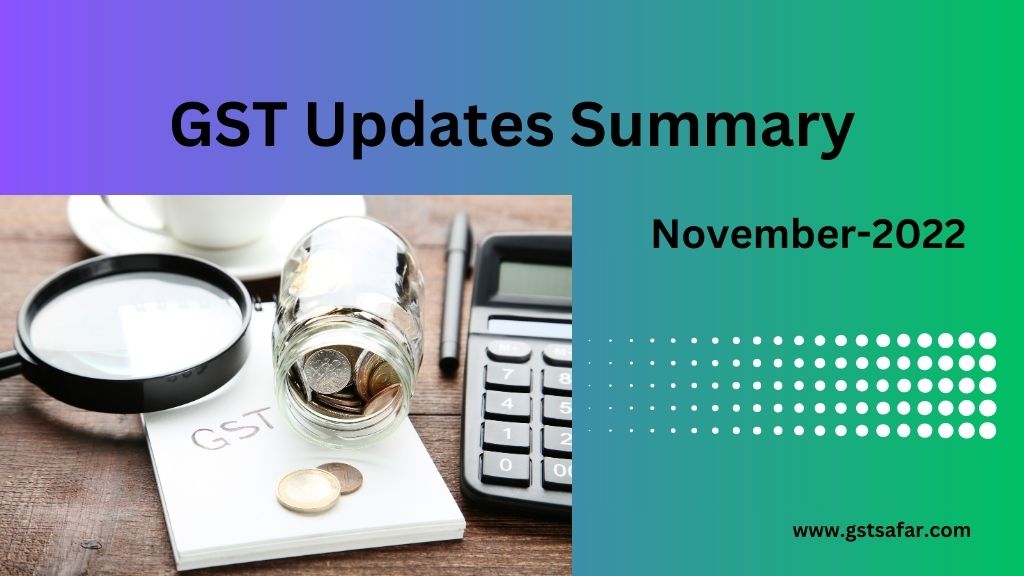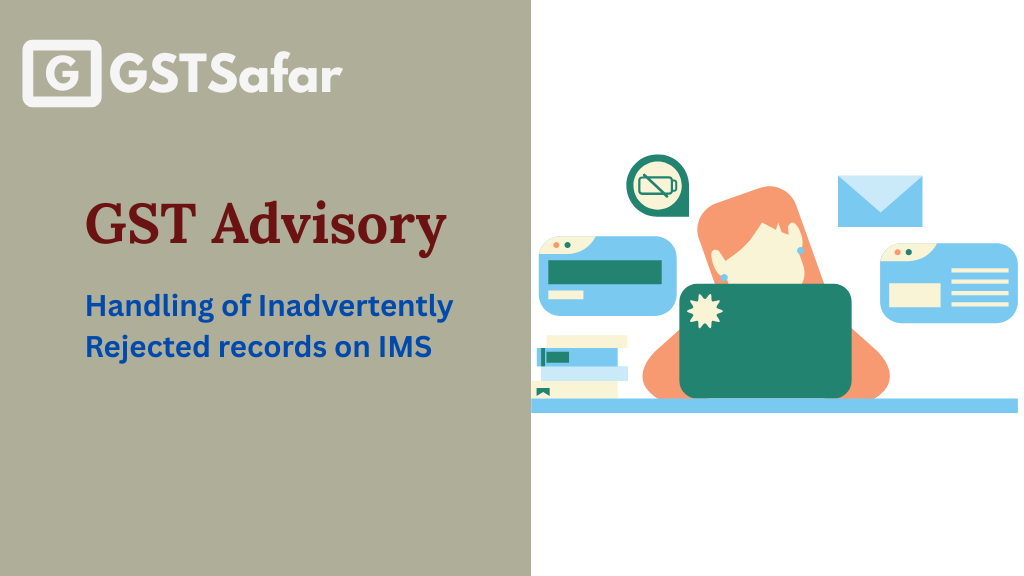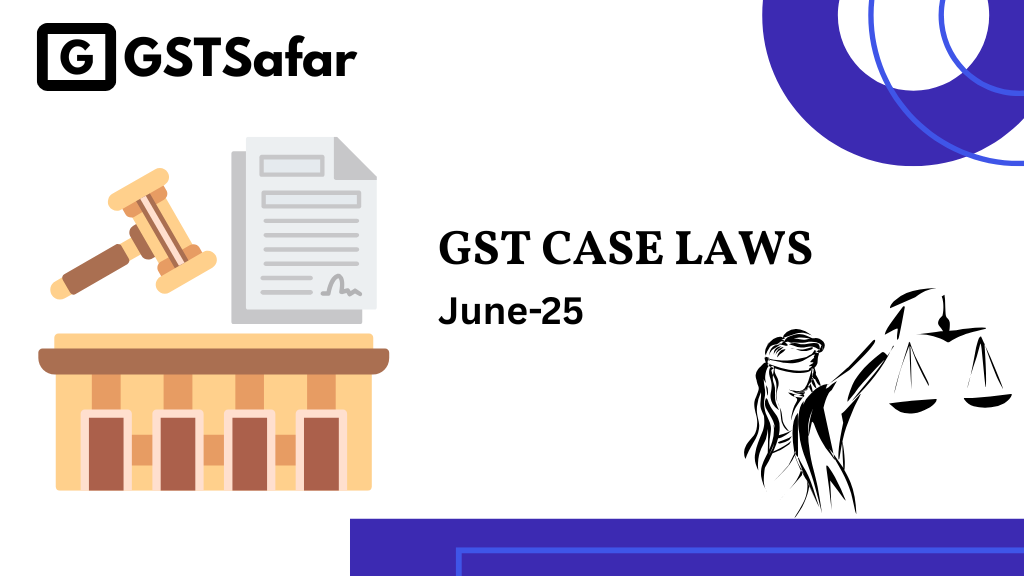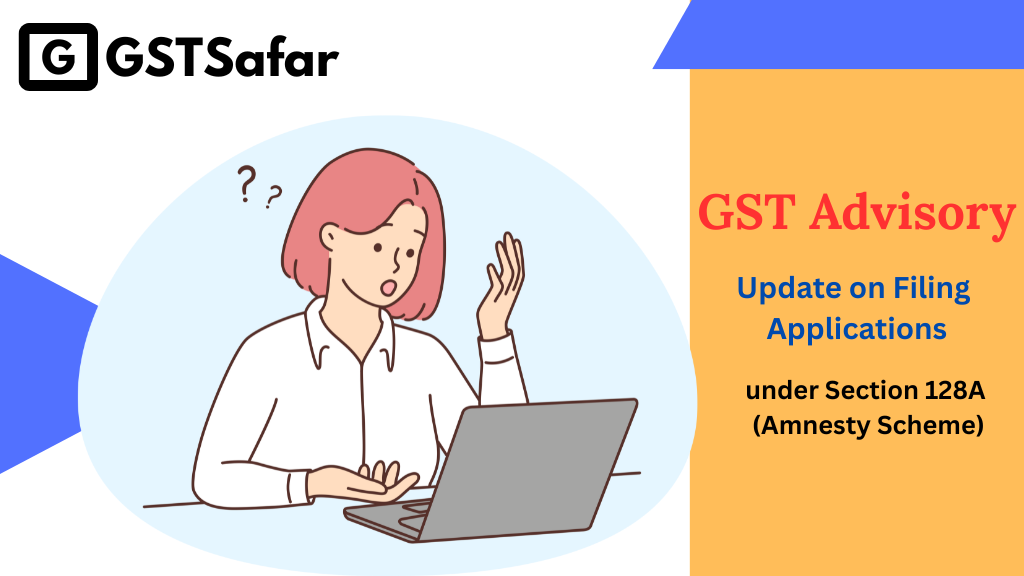This articles covers the latest gst updates summary November-2022. It contains all the Notifications and Circulars issued in November-2022 which covers all GST Updates November-2022. All these amendments have been presented hear topic wise and reference of relevant latest gst notifications and latest gst circulars have been given at bottom of each topic. As well as, I have given our own analysis wherever it is necessary.
Table of Contents
ToggleThe time limit to claim ITC has increased | GST Updates Summary November-2022
Previously, businesses had the option to claim Input Tax Credit (ITC) for the financial year 2021-22 until the due dates of either the GSTR 3B return for September 2022 or the annual return, whichever was earlier. However, a recent amendment to Section 16(4) now allows businesses to claim ITC for any invoice or debit note within November 30th following the end of the financial year or after filing the relevant annual return, whichever occurs first
CBIC Announcement: CCI to handle Anti-profiteering cases under GST | GST Updates Summary November-2022
The CBIC has announced that starting from December 1, 2022, the Competency Commission of India (CCI) will be responsible for dealing with anti-profiteering cases under the CGST Act, 2017. The CCI will now have the authority to investigate whether a registered person’s use of input tax credits or a reduction in tax rates has led to a real reduction in the prices of the goods or services they provide. In simpler terms, they’ll check if any tax benefits businesses get are passed on to customers through lower prices.
Clarification on Refund related issues | GST Updates Summary November-2022
| Sr No | Issue | Clarification |
| 1 | The formula prescribed under Rule 89(5) of CGST Rules for calculation of refund for inverted Duty structure will be applicable to refund application filed on or after 05- 07-2022 or application filed before 05-07- 2022 and pending with proper officer as on 05-07-2022? | It would be applicable in respect of refund applications filed on or after 05.07.2022. The refund applications filed before 05.07.2022 will be dealt as per the formula as it existed before the amendment made vide Notification No. 14/2022-Central Tax dated 05.07.2022 |
| 2 | The restriction placed on refund on unutilized ITC on account of inverted duty structure in case of certain goods falling under chapter 15 & 27 which has been made effective from 18-07-2022 would be applicable to refund application pending as on 18-07-2022 or filed on or after 18- 07-2022 or whether the same will be applicable only to refunds pertaining to prospective tax periods? | With effect from 18-07-2022 certain goods categorized under chapters 15 and 27 are not eligible for a refund of unused input tax credit. This rule applies in the case of an Inverted duty structure. it is clarified that the restriction imposed by the said notification would be applicable in respect of all refund applications filed on or after 18.07.2022, and would not apply to the refund applications filed before 18.07.2022. |
Guidelines for Verification of Transitional credit| GST Updates Summary November-2022
From October 1 to November 30, 2022, the GST Network (GSTN) is allowing taxpayers to claim transitional credit under GST law. Taxpayers who missed claiming transitional tax credits under old tax laws (like VAT, service tax, or excise) due to technical issues can now claim it using Form TRAN-1 and TRAN-2 on the GST portal during this period.
After claiming, the credit will be added to the taxpayer’s electronic credit ledger after verification by the relevant tax officer. This verification will occur between December 1, 2022, and February 28, 2023. In addition to filing or revising on the GST portal, taxpayers must submit a self-certified downloaded copy of their filed or revised TRAN-1/TRAN-2 form along with a declaration (Annexure-A) to their tax officer, following guidelines from CGST Circular No.180/12/2022 issued on September 9, 2022.
Clarification on Procedures for Risky Exporters and IGST Refunds | GST Updates Summary November-2022
| Heading | Summary |
| Background Information: | The government has made changes to the rules regarding the verification of risky exporters and their eligibility for IGST refunds. This involves procedures outlined in Standard Operating Procedures (SOPs) issued on January 23, 2020, and May 20, 2020. |
| Changes in rules & procedures | Amendment to Rule 96: Rule 96 of the Central Goods and Services Tax (CGST) Rules has been changed from July 1, 2017, onwards. It now allows for withholding IGST refunds if verification of the exporter’s credentials, including their Input Tax Credit (ITC) usage, is necessary to protect tax revenue. |
| Authorization to DGARM: The Directorate General of Analytics and Risk Management (DGARM) has been authorized by the Board to handle functions related to verifying exporters’ credentials as per the amended Rule 96. | |
| New Procedures: DGARM will identify risky exporters based on data analysis and risk parameters. An alert will be placed on such exporters in the customs system. Customs and CGST authorities will conduct detailed verifications and submit reports to DGARM. If DGARM issues a No Objection Certificate (NOC), withheld IGST refunds will be released. | |
| System Generated Refund Claims: Refunds will be generated automatically for exporters flagged by DGARM. These claims will be processed by the jurisdictional tax officers, who will verify the exporter’s genuineness and ITC utilization. | |
| No Deficiency Memo for System Generated Claims: Since these claims are system-generated, no deficiency memo can be issued. However, officers must ensure proper verification and issue detailed orders for refund processing. | |
| Feedback and Continued Monitoring: Officers will provide feedback on the portal regarding whether alerts on exporters should continue or be removed. Zonal authorities will monitor the processing of these refund claims to ensure timely and accurate processing. | |
| Superseding Previous SOPs: | The new procedures supersede(replace) the SOPS dated January 23, 2020, and May 20, 2020. |
| Seeking Clarifications: | Any challenges in implementing these instructions should be reported to the Board for resolution |
Read similar article









